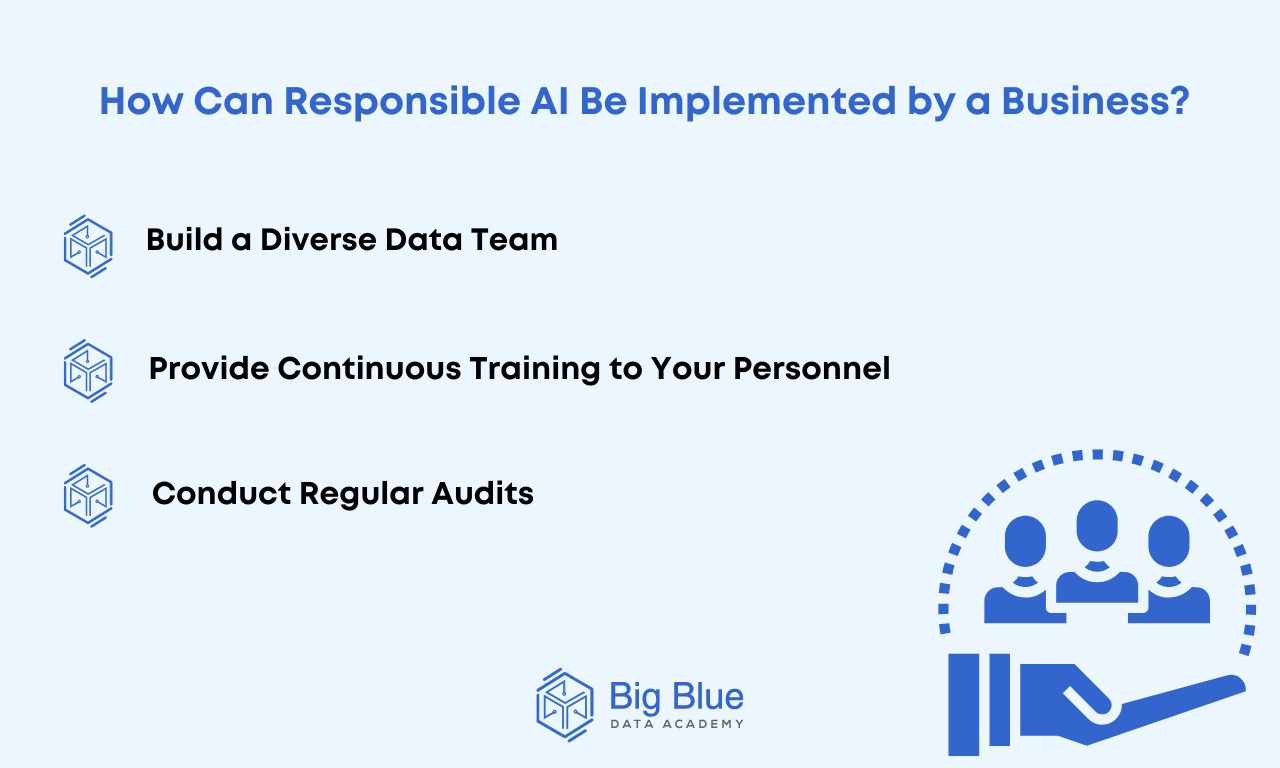Misconceptions About AI Learning: A Guide To Responsible AI Implementation

Table of Contents
- Myth 1: AI is Sentient and Self-Aware
- Debunking the Sentience Myth
- Myth 2: AI Learning is a "Set it and Forget it" Process
- The Importance of Ongoing Monitoring and Adjustment
- Myth 3: AI is Always Objective and Unbiased
- Addressing Bias in AI Learning
- Myth 4: AI Learning Requires Immense Computational Power and Resources
- Exploring Efficient AI Learning Methods
- Conclusion
Myth 1: AI is Sentient and Self-Aware
Debunking the Sentience Myth
A prevalent misconception about AI learning is the belief that AI systems possess sentience and self-awareness, akin to human consciousness. This is fundamentally inaccurate. Current AI, even the most sophisticated, is fundamentally based on complex algorithms and statistical models. These systems excel at pattern recognition and prediction, but they lack genuine understanding, feelings, or self-awareness.
- Artificial intelligence (AI), in its current form, differs vastly from human intelligence. Humans possess subjective experiences, emotions, and consciousness—elements entirely absent in today's AI systems.
- Current AI's limitations are evident in its inability to truly comprehend context, nuance, or the subtleties of human emotion. An AI might process language perfectly, but it doesn't "understand" the meaning in the same way a human does.
- Consider an AI generating a poem: while it might follow poetic structures and rhyme schemes flawlessly, the AI doesn't experience the emotions or inspirations that drive human creativity. This highlights the crucial distinction between sophisticated mimicry and genuine understanding.
Myth 2: AI Learning is a "Set it and Forget it" Process
The Importance of Ongoing Monitoring and Adjustment
Another significant misconception about AI learning is the idea that training an AI model is a one-time event. This couldn't be further from the truth. Effective AI requires continuous monitoring, retraining, and adjustment to maintain accuracy and relevance.
- Data drift is a critical factor. Over time, the data an AI model was trained on might become outdated or no longer accurately reflect the real-world conditions it operates in. This leads to a decrease in model accuracy and predictive power.
- Regular model evaluation is essential. This involves using various metrics to assess the performance of the AI model and identify areas for improvement. This often involves comparing predictions against new datasets that are independent from the original training data.
- Human oversight is paramount. While AI can automate many tasks, human experts are crucial for monitoring performance, interpreting results, and ensuring ethical and responsible behavior. This includes identifying and addressing unexpected or harmful outcomes.
Myth 3: AI is Always Objective and Unbiased
Addressing Bias in AI Learning
A critical misconception about AI learning revolves around objectivity. Many believe AI is inherently unbiased, simply reflecting the data it's trained on. However, AI systems can inherit and even amplify existing biases present in the data.
- Bias can originate from numerous sources: historical data reflecting societal biases, sampling errors leading to underrepresentation of certain groups, or even the choices made during data collection and preprocessing.
- Mitigating bias requires proactive measures. This involves techniques like data augmentation (increasing the diversity of the dataset), employing fairness-aware algorithms, and critically evaluating the data sources for potential biases.
- Using diverse and representative datasets is crucial. If the training data lacks diversity, the resulting AI system will likely perpetuate and even exacerbate existing societal inequalities.
Myth 4: AI Learning Requires Immense Computational Power and Resources
Exploring Efficient AI Learning Methods
A final common misconception about AI learning is the assumption that it necessitates massive computational resources. While some AI models do demand significant power, advancements are making efficient AI more accessible.
- Developments in deep learning models, including more efficient architectures and training techniques, have significantly reduced the computational burden.
- Federated learning and edge computing offer compelling alternatives. Federated learning allows models to be trained on decentralized data sources, reducing the need for centralized data storage and processing. Edge computing shifts AI processing to devices closer to the data source, further improving efficiency.
- The pursuit of sustainable AI is gaining momentum, focusing on minimizing the environmental impact of AI development and deployment. This includes developing energy-efficient algorithms and hardware.
Conclusion
Understanding the misconceptions about AI learning is crucial for responsible AI implementation. We've debunked the myths of AI sentience, the "set-it-and-forget-it" approach, inherent objectivity, and the necessity of immense computational power. By acknowledging these misconceptions and adopting responsible practices, we can harness the immense potential of AI while mitigating its potential risks. Avoid common misconceptions about AI learning and implement AI responsibly, understanding AI learning's complexities. Learn more about responsible AI learning and its ethical implications by exploring resources on ethical AI development and deployment.

 Moroccan Childrens Charity Receives Support From Dragons Den Star Duncan Bannatyne
Moroccan Childrens Charity Receives Support From Dragons Den Star Duncan Bannatyne
 Boxer Munguia Responds To Failed Drug Test
Boxer Munguia Responds To Failed Drug Test
 Sanofi Rachete Un Anticorps A Dren Bio Le Point Sur L Accord De 2025
Sanofi Rachete Un Anticorps A Dren Bio Le Point Sur L Accord De 2025
 Miley Cyrus Flowers Premiera I Reakcje Fanow Na Nowy Singiel
Miley Cyrus Flowers Premiera I Reakcje Fanow Na Nowy Singiel
 Building The Good Life A Holistic Approach To Wellbeing
Building The Good Life A Holistic Approach To Wellbeing
